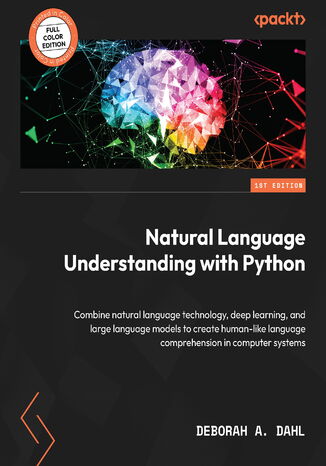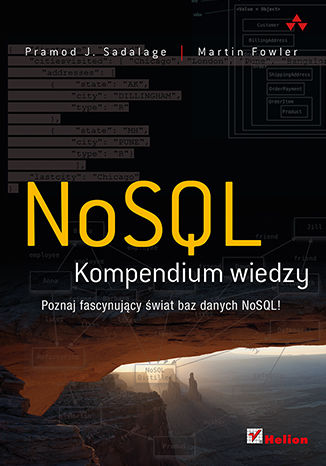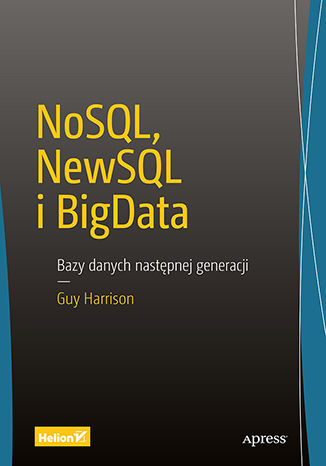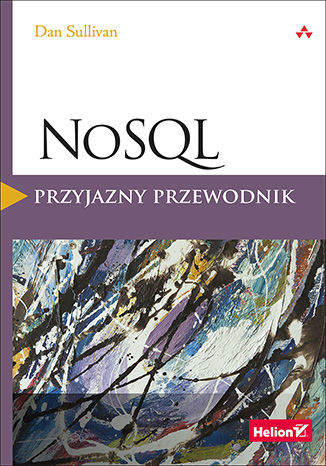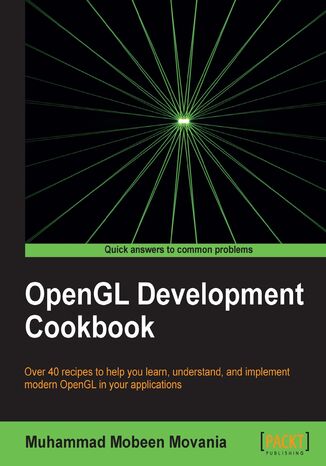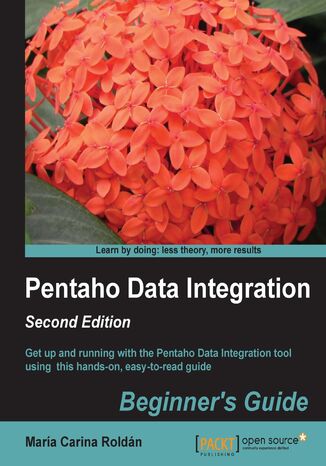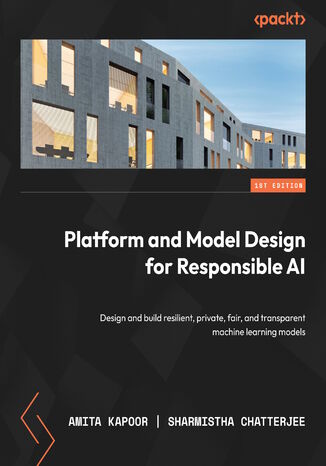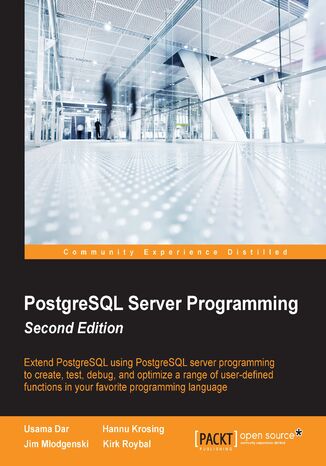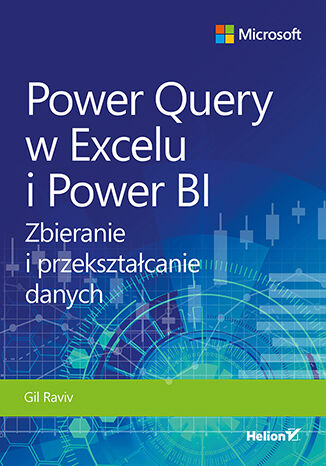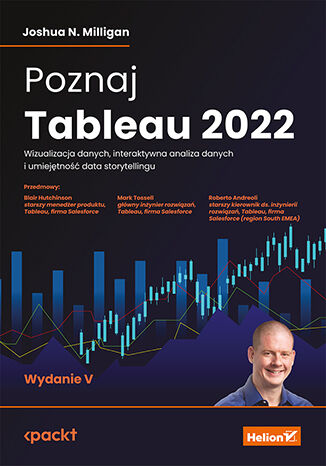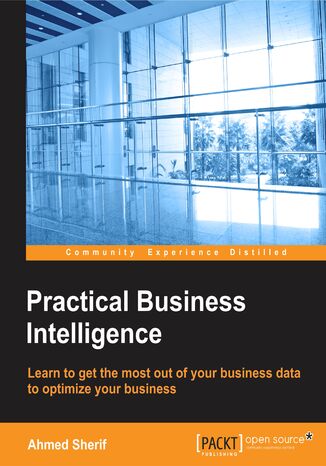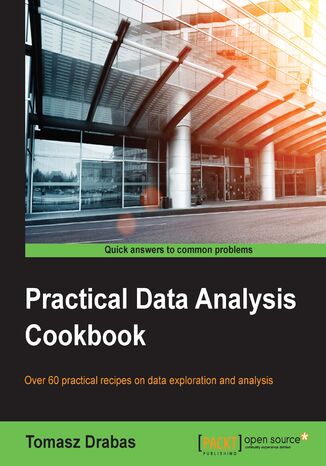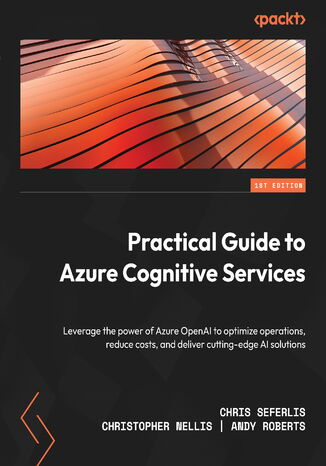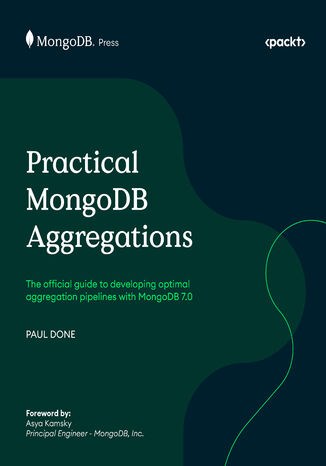Категорії
Електронні книги
-
Бізнес та економіка
- Біткойн
- Ділова жінка
- Коучинг
- Контроль
- Електронний бізнес
- Економіка
- Фінанси
- Фондова біржа та інвестиції
- Особисті компетенції
- Комп'ютер в офісі
- Комунікація та переговори
- Малий бізнес
- Маркетинг
- Мотивація
- Мультимедійне навчання
- Нерухомість
- Переконання та НЛП
- Податки
- Соціальна політика
- Порадники
- Презентації
- Лідерство
- Зв'язки з громадськістю
- Звіти, аналізи
- Секрет
- Соціальні засоби комунікації
- Продаж
- Стартап
- Ваша кар'єра
- Управління
- Управління проектами
- Людські ресурси (HR)
-
Для дітей
-
Для молоді
-
Освіта
-
Енциклопедії, словники
-
Електронна преса
- Architektura i wnętrza
- Безпека життєдіяльності
- Biznes i Ekonomia
- Будинок та сад
- Електронний бізнес
- Ekonomia i finanse
- Езотерика
- Фінанси
- Особисті фінанси
- Бізнес
- Фотографія
- Інформатика
- Відділ кадрів та оплата праці
- Для жінок
- Комп'ютери, Excel
- Бухгалтерія
- Культура та література
- Наукові та академічні
- Охорона навколишнього середовища
- Впливові
- Освіта
- Податки
- Подорожі
- Психологія
- Релігія
- Сільське господарство
- Ринок книг і преси
- Транспорт та спедиція
- Здоров'я та краса
-
Історія
-
Інформатика
- Офісні застосунки
- Бази даних
- Біоінформатика
- Бізнес ІТ
- CAD/CAM
- Digital Lifestyle
- DTP
- Електроніка
- Цифрова фотографія
- Комп'ютерна графіка
- Ігри
- Хакування
- Hardware
- IT w ekonomii
- Наукові пакети
- Шкільні підручники
- Основи комп'ютера
- Програмування
- Мобільне програмування
- Інтернет-сервери
- Комп'ютерні мережі
- Стартап
- Операційні системи
- Штучний інтелект
- Технологія для дітей
- Вебмайстерність
-
Інше
-
Іноземні мови
-
Культура та мистецтво
-
Шкільні читанки
-
Література
- Антології
- Балада
- Біографії та автобіографії
- Для дорослих
- Драми
- Журнали, щоденники, листи
- Епос, епопея
- Нарис
- Наукова фантастика та фантастика
- Фельєтони
- Художня література
- Гумор, сатира
- Інше
- Класичний
- Кримінальний роман
- Нехудожня література
- Художня література
- Mity i legendy
- Лауреати Нобелівської премії
- Новели
- Побутовий роман
- Okultyzm i magia
- Оповідання
- Спогади
- Подорожі
- Оповідна поезія
- Поезія
- Політика
- Науково-популярна
- Роман
- Історичний роман
- Проза
- Пригодницька
- Журналістика
- Роман-репортаж
- Romans i literatura obyczajowa
- Сенсація
- Трилер, жах
- Інтерв'ю та спогади
-
Природничі науки
-
Соціальні науки
-
Шкільні підручники
-
Науково-популярна та академічна
- Археологія
- Bibliotekoznawstwo
- Кінознавство / Теорія кіно
- Філологія
- Польська філологія
- Філософія
- Finanse i bankowość
- Географія
- Економіка
- Торгівля. Світова економіка
- Історія та археологія
- Історія мистецтва і архітектури
- Культурологія
- Мовознавство
- літературні студії
- Логістика
- Математика
- Ліки
- Гуманітарні науки
- Педагогіка
- Навчальні засоби
- Науково-популярна
- Інше
- Психологія
- Соціологія
- Театральні студії
- Богослов’я
- Економічні теорії та науки
- Transport i spedycja
- Фізичне виховання
- Zarządzanie i marketing
-
Порадники
-
Ігрові посібники
-
Професійні та спеціальні порадники
-
Юридична
- Безпека життєдіяльності
- Історія
- Дорожній кодекс. Водійські права
- Юридичні науки
- Охорона здоров'я
- Загальне, компендіум
- Академічні підручники
- Інше
- Закон про будівництво і житло
- Цивільне право
- Фінансове право
- Господарське право
- Господарське та комерційне право
- Кримінальний закон
- Кримінальне право. Кримінальні злочини. Кримінологія
- Міжнародне право
- Міжнародне та іноземне право
- Закон про охорону здоров'я
- Закон про освіту
- Податкове право
- Трудове право та законодавство про соціальне забезпечення
- Громадське, конституційне та адміністративне право
- Кодекс про шлюб і сім'ю
- Аграрне право
- Соціальне право, трудове право
- Законодавство Євросоюзу
- Промисловість
- Сільське господарство та захист навколишнього середовища
- Словники та енциклопедії
- Державні закупівлі
- Управління
-
Путівники та подорожі
- Африка
- Альбоми
- Південна Америка
- Центральна та Північна Америка
- Австралія, Нова Зеландія, Океанія
- Австрія
- Азії
- Балкани
- Близький Схід
- Болгарія
- Китай
- Хорватія
- Чеська Республіка
- Данія
- Єгипет
- Естонія
- Європа
- Франція
- Гори
- Греція
- Іспанія
- Нідерланди
- Ісландія
- Литва
- Латвія
- Mapy, Plany miast, Atlasy
- Мініпутівники
- Німеччина
- Норвегія
- Активні подорожі
- Польща
- Португалія
- Інше
- Przewodniki po hotelach i restauracjach
- Росія
- Румунія
- Словаччина
- Словенія
- Швейцарія
- Швеція
- Світ
- Туреччина
- Україна
- Угорщина
- Велика Британія
- Італія
-
Психологія
- Філософія життя
- Kompetencje psychospołeczne
- Міжособистісне спілкування
- Mindfulness
- Загальне
- Переконання та НЛП
- Академічна психологія
- Психологія душі та розуму
- Психологія праці
- Relacje i związki
- Батьківство та дитяча психологія
- Вирішення проблем
- Інтелектуальний розвиток
- Секрет
- Сексуальність
- Спокушання
- Зовнішній вигляд та імідж
- Філософія життя
-
Релігія
-
Спорт, фітнес, дієти
-
Техніка і механіка
Аудіокниги
-
Бізнес та економіка
- Біткойн
- Ділова жінка
- Коучинг
- Контроль
- Електронний бізнес
- Економіка
- Фінанси
- Фондова біржа та інвестиції
- Особисті компетенції
- Комунікація та переговори
- Малий бізнес
- Маркетинг
- Мотивація
- Нерухомість
- Переконання та НЛП
- Податки
- Соціальна політика
- Порадники
- Презентації
- Лідерство
- Зв'язки з громадськістю
- Секрет
- Соціальні засоби комунікації
- Продаж
- Стартап
- Ваша кар'єра
- Управління
- Управління проектами
- Людські ресурси (HR)
-
Для дітей
-
Для молоді
-
Освіта
-
Енциклопедії, словники
-
Електронна преса
-
Історія
-
Інформатика
-
Інше
-
Іноземні мови
-
Культура та мистецтво
-
Шкільні читанки
-
Література
- Антології
- Балада
- Біографії та автобіографії
- Для дорослих
- Драми
- Журнали, щоденники, листи
- Епос, епопея
- Нарис
- Наукова фантастика та фантастика
- Фельєтони
- Художня література
- Гумор, сатира
- Інше
- Класичний
- Кримінальний роман
- Нехудожня література
- Художня література
- Mity i legendy
- Лауреати Нобелівської премії
- Новели
- Побутовий роман
- Okultyzm i magia
- Оповідання
- Спогади
- Подорожі
- Поезія
- Політика
- Науково-популярна
- Роман
- Історичний роман
- Проза
- Пригодницька
- Журналістика
- Роман-репортаж
- Romans i literatura obyczajowa
- Сенсація
- Трилер, жах
- Інтерв'ю та спогади
-
Природничі науки
-
Соціальні науки
-
Науково-популярна та академічна
-
Порадники
-
Професійні та спеціальні порадники
-
Юридична
-
Путівники та подорожі
-
Психологія
- Філософія життя
- Міжособистісне спілкування
- Mindfulness
- Загальне
- Переконання та НЛП
- Академічна психологія
- Психологія душі та розуму
- Психологія праці
- Relacje i związki
- Батьківство та дитяча психологія
- Вирішення проблем
- Інтелектуальний розвиток
- Секрет
- Сексуальність
- Спокушання
- Зовнішній вигляд та імідж
- Філософія життя
-
Релігія
-
Спорт, фітнес, дієти
-
Техніка і механіка
Відеокурси
-
Бази даних
-
Big Data
-
Biznes, ekonomia i marketing
-
Кібербезпека
-
Data Science
-
DevOps
-
Для дітей
-
Електроніка
-
Графіка / Відео / CAX
-
Ігри
-
Microsoft Office
-
Інструменти розробки
-
Програмування
-
Особистісний розвиток
-
Комп'ютерні мережі
-
Операційні системи
-
Тестування програмного забезпечення
-
Мобільні пристрої
-
UX/UI
-
Веброзробка, Web development
-
Управління
Подкасти
Інше
Natural Language Understanding facilitates the organization and structuring of language allowing computer systems to effectively process textual information for various practical applications. Natural Language Understanding with Python will help you explore practical techniques for harnessing NLU to create diverse applications. with step-by-step explanations of essential concepts and practical examples, you’ll begin by learning about NLU and its applications. You’ll then explore a wide range of current NLU techniques and their most appropriate use-case. In the process, you’ll be introduced to the most useful Python NLU libraries. Not only will you learn the basics of NLU, you’ll also discover practical issues such as acquiring data, evaluating systems, and deploying NLU applications along with their solutions. The book is a comprehensive guide that’ll help you explore techniques and resources that can be used for different applications in the future.By the end of this book, you’ll be well-versed with the concepts of natural language understanding, deep learning, and large language models (LLMs) for building various AI-based applications.
Martin Fowler, Pramod J. Sadalage
Poznaj fascynujący świat baz danych NoSQL! Bazy danych NoSQL są coraz popularniejsze. Pozwalają na przechowywanie gigantycznych ilości danych, a przy tym zachowują cały czas najwyższą wydajność. Sprawdzają się doskonale wszędzie tam, gdzie konieczne są wysoka skalowalność systemu, elastyczne przechowywanie często zmieniających się danych lub inne specyficzne zastosowania. Jeżeli jesteś zagorzałym użytkownikiem relacyjnych baz danych SQL, jeżeli słyszałeś o bazach NoSQL i chcesz je poznać, trafiłeś na doskonałą książkę! Stanowi ona doskonałe wprowadzenie do świata baz danych NoSQL. Na własnej skórze przekonasz się, w jakich zastosowaniach sprawdzą się one doskonale, a w jakich lepiej ich nie używać. W kolejnych rozdziałach poznasz stosowane modele danych oraz dowiesz się, co to jest map-reduce. Część druga książki została poświęcona konkretnym implementacjom - zapoznasz się z bazami klucz-wartość, bazami dokumentów oraz bazami grafowymi. Sprawdź, które najlepiej rozwiążą Twoje problemy! Sięgnij po tę książkę i śmiało wkrocz w świat baz danych NoSQL! Omawiane w książce zagadnienia: Określenie, dla których zastosowań bazy NoSQL będą (albo nie będą) odpowiednie. Zrozumienie architektonicznych kompromisów związanych z wdrożeniem NoSQL. Wykorzystanie NoSQL do uproszczenia procesu tworzenia oprogramowania i uniknięcia problemu mapowania pomiędzy strukturami w pamięci a bazą relacyjną. Porównanie przodujących systemów NoSQL. Omówienie języków zapytań: CQL i Cypher. Zarządzanie wydajnością, niezawodnością, dostępnością i zdolnością do odzyskiwania po awarii. Wykorzystanie NoSQL w środowiskach zwinnych. Wykorzystanie NoSQL do wyszukiwania danych, zarządzania metadanymi, analizy tekstu, sieci społecznościowych, analizy danych i usług finansowych. Bardziej efektywne kosztowo zarządzanie dużymi danymi dzięki wykorzystaniu klastrów. Jak teoria CAP wpływa na sposób myślenia o spójności, dostępności i wydajności. Równoległe przetwarzanie danych w klastrze za pomocą map-reduce. Dlaczego NoSQL to termin bez jasno zdefiniowanego znaczenia. Zmień sposób myślenia na nierelacyjny!
NoSQL, NewSQL i BigData. Bazy danych następnej generacji
Model relacyjnej bazy danych zdecydowanie dominował wśród technologii bazodanowych przez ostatnie 20 lat. Poszczególne rozwiązania były do siebie na tyle podobne, że decyzja o zastosowaniu relacyjnej bazy danych stała się oczywista. Architektura rozwiązań tego typu była zbliżona, a różnice polegały głównie na koszcie wdrożenia, wydajności, niezawodności i łatwości użycia aplikacji. Obecnie sytuacja diametralnie się zmieniła: powstało wiele radykalnie różniących się od siebie technologii bazodanowych, a wybór właściwej bazy danych stał się złożonym zadaniem, wymagającym sporej wiedzy i obarczonym poważnymi konsekwencjami natury ekonomicznej i technologicznej. Ta książka szczególnie przyda się architektom technologii informatycznych, administratorom baz danych i projektantom, którzy do wykonywania swoich obowiązków potrzebują wiedzy o najświeższych rozwiązaniach z dziedziny technologii baz danych. Omówiono tu najnowsze, wykorzystywane obecnie technologie baz danych. Wyjaśniono, w jakim celu zaprojektowano każdą z nich. Zaprezentowano możliwości poszczególnych baz danych oraz ich potencjał w rozwiązywaniu realnych problemów biznesowych i problemów z aplikacjami. Co najważniejsze, ukazano różnice w architekturze między technologiami, które mają kluczowe znaczenie przy wyborze platformy baz danych dla nowych i planowanych projektów. W tej książce między innymi: Co zrewolucjonizowało bazy danych Google, Hadoop i koncepcja BigData Pamięciowe i rozproszone bazy danych NoSQL, CQL i nowe odsłony SQL Hybrydowe bazy danych Oracle NoSQL i BigData: potężne bazy danych przyszłości!
Systemy do zarządzania danymi muszą dziś spełniać o wiele wyższe wymagania niż kiedyś. W wielu przypadkach nierelacyjne bazy danych, zwane NoSQL, są lepszym rozwiązaniem niż dominujące do niedawna bazy relacyjne. Projektant systemu ma więc do dyspozycji dobrze znane bazy relacyjne oraz systemy NoSQL, takie jak bazy klucz–wartość, bazy dokumentów, rodziny kolumn i bazy grafowe. Do rozstrzygnięcia pozostaje problem: którą technologię zarządzania danymi wybrać w danym przypadku. Niniejsza książka jest przystępnym, pragmatycznym przewodnikiem po nierelacyjnych systemach bazodanowych. Pokazano w niej, czym różnią się NoSQL od baz relacyjnych. Szczególny nacisk położono na wyjaśnienie tych cech i funkcjonalności, które powinny być uwzględniane podczas projektowania aplikacji i wybierania technologii bazodanowych. Przedstawiono wewnętrzne mechanizmy baz NoSQL i wyjaśniono, w jaki sposób da się zbudować za ich pomocą skalowalne, niezawodne aplikacje. Nie zabrakło przydatnych wskazówek, zasad projektowych i najlepszych praktyk. W tej książce znajdziesz: podstawy relacyjnych baz danych w odniesieniu do systemów NoSQL bazy klucz–wartość — ich charakterystykę, zasady projektowania i słabe strony bazy dokumentów — koncepcje baz bez schematu, podstawowe operacje, najpowszechniejsze wzorce projektowe bazy rodzin kolumn — aplikacje BigData, architekturę baz, zasady projektowania i wykorzystywania bazy grafowe — modelowanie grafów i sieci, wskazówki projektowe, możliwe problemy zasady dobierania technologii bazodanowej do konkretnych zastosowań Nie wiesz jeszcze, którą bazę wybrać? Najwyższy czas to rozstrzygnąć! Dan Sullivan — jest naukowcem i architektem danych. Od dwudziestu lat zajmuje się m.in. analizą biznesową, uczeniem maszynowym i data miningiem. Sullivan jest uznanym ekspertem w dziedzinie baz danych, zarówno relacyjnych, jak i NoSQL.
OpenGL is the leading cross-language, multi-platform API used by masses of modern games and applications in a vast array of different sectors. Developing graphics with OpenGL lets you harness the increasing power of GPUs and really take your visuals to the next level.OpenGL Development Cookbook is your guide to graphical programming techniques to implement 3D mesh formats and skeletal animation to learn and understand OpenGL.OpenGL Development Cookbook introduces you to the modern OpenGL. Beginning with vertex-based deformations, common mesh formats, and skeletal animation with GPU skinning, and going on to demonstrate different shader stages in the graphics pipeline. OpenGL Development Cookbook focuses on providing you with practical examples on complex topics, such as variance shadow mapping, GPU-based paths, and ray tracing. By the end you will be familiar with the latest advanced GPU-based volume rendering techniques.
Capturing, manipulating, cleansing, transferring, and loading data effectively are the prime requirements in every IT organization. Achieving these tasks require people devoted to developing extensive software programs, or investing in ETL or data integration tools that can simplify this work.Pentaho Data Integration is a full-featured open source ETL solution that allows you to meet these requirements. Pentaho Data Integration has an intuitive, graphical, drag-and-drop design environment and its ETL capabilities are powerful. However, getting started with Pentaho Data Integration can be difficult or confusing.Pentaho Data Integration Beginner's Guide - Second Edition provides the guidance needed to overcome that difficulty, covering all the possible key features of Pentaho Data Integration.Pentaho Data Integration Beginner's Guide - Second Edition starts with the installation of Pentaho Data Integration software and then moves on to cover all the key Pentaho Data Integration concepts. Each chapter introduces new features, allowing you to gradually get involved with the tool. First, you will learn to do all kinds of data manipulation and work with plain files. Then, the book gives you a primer on databases and teaches you how to work with databases inside Pentaho Data Integration. Moreover, you will be introduced to data warehouse concepts and you will learn how to load data in a data warehouse. After that, you will learn to implement simple and complex processes. Finally, you will have the opportunity of applying and reinforcing all the learned concepts through the implementation of a simple datamart.With Pentaho Data Integration Beginner's Guide - Second Edition, you will learn everything you need to know in order to meet your data manipulation requirements.
Amita Kapoor, Sharmistha Chatterjee
AI algorithms are ubiquitous and used for tasks, from recruiting to deciding who will get a loan. With such widespread use of AI in the decision-making process, it’s necessary to build an explainable, responsible, transparent, and trustworthy AI-enabled system. With Platform and Model Design for Responsible AI, you’ll be able to make existing black box models transparent.You’ll be able to identify and eliminate bias in your models, deal with uncertainty arising from both data and model limitations, and provide a responsible AI solution. You’ll start by designing ethical models for traditional and deep learning ML models, as well as deploying them in a sustainable production setup. After that, you’ll learn how to set up data pipelines, validate datasets, and set up component microservices in a secure and private way in any cloud-agnostic framework. You’ll then build a fair and private ML model with proper constraints, tune the hyperparameters, and evaluate the model metrics.By the end of this book, you’ll know the best practices to comply with data privacy and ethics laws, in addition to the techniques needed for data anonymization. You’ll be able to develop models with explainability, store them in feature stores, and handle uncertainty in model predictions.
Podstawy wizualizacji danych. Zasady tworzenia atrakcyjnych wykresów
Aby skutecznie przekazać wiedzę płynącą z zebranych danych, szczególnie w przypadku nauk przyrodniczych, ekonomicznych i społecznych, warto sięgnąć po narzędzia do wizualizacji. Nie jest to trywialne zadanie: często trzeba korzystać z coraz większych i coraz bardziej złożonych zbiorów danych, a dostępne narzędzia do wizualizacji zapewniają oszałamiający wybór rozwiązań i opcji, w których łatwo się pogubić. Co więcej, podczas przygotowywania prezentacji należy wziąć pod uwagę szczególne właściwości ludzkiego umysłu w zakresie postrzegania i przyswajania informacji. Efektywna wizualizacja danych jest bardzo istotną sprawą: nierzadko od jakości przekazywanych w ten sposób informacji zależy trafność podejmowanych decyzji. Ten poradnik pomoże Ci uniknąć często spotykanych problemów z wizualizacją danych. Zawiera wskazówki, dzięki którym szybko zaczniesz tworzyć świetnie wyglądające i bogate w treść wykresy. Nauczysz się bezbłędnego dobierania najlepszego w danej sytuacji sposobu wizualizacji, poznasz reguły stosowania kolorów, wielkości i rodzaju czcionki, zachowywania odpowiednich proporcji poszczególnych części wykresu — i przekonasz się, że dobrymi decyzjami co do jego estetyki możesz zapewnić mu przejrzystość i elegancję. Znajdziesz tu również obszerny katalog wizualizacji, co ułatwi zapoznanie się z powszechnie używanymi metodami wizualizowania danych. Ważną częścią książki jest zestaw przykładów dobrze i źle przygotowanych wykresów z wyczerpującymi wyjaśnieniami. Najciekawsze koncepcje opisane w książce: kolor jako cenne narzędzie wyróżniania danych dostarczanie kluczowych informacji na wiele sposobów dobór technik wizualizacji do różnych rodzajów danych reguły pomocne w projektowaniu estetycznych wykresów technika stosowania wykresów w większym dokumencie A więc jak wygląda wykres, który decyduje o sukcesie prezentacji?
Potoki danych. Leksykon kieszonkowy. Przenoszenie i przetwarzanie danych na potrzeby ich analizy
Poprawnie zaprojektowane i wdrożone potoki danych mają kluczowe znaczenie dla pomyślnej analizy danych, a także w trakcie uczenia maszynowego. Pozyskanie ogromnych ilości danych z różnych źródeł najczęściej nie stanowi problemu. Nieco trudniejsze jest zaprojektowanie procesu ich przetwarzania w celu dostarczenia kontekstu w taki sposób, aby efektywnie korzystać z posiadanych danych w codziennej pracy organizacji i podejmować dzięki nim rozsądne decyzje. Oto zwięzły przewodnik przeznaczony dla inżynierów danych, którzy chcą poznać zasady implementacji potoków danych. Wyjaśnia najważniejsze pojęcia związane z potokami danych, opisuje zasady ich tworzenia i implementacji, prezentuje także najlepsze praktyki stosowane przez liderów w branży analizy danych. Dzięki książce zrozumiesz, w jaki sposób potoki danych działają na nowoczesnym stosie danych, poznasz też typowe zagadnienia, które trzeba przemyśleć przed podjęciem decyzji dotyczących implementacji. Dowiesz się, jakie są zalety samodzielnego opracowania rozwiązania, a jakie - zakupu gotowego produktu. Poznasz również podstawowe koncepcje, które mają zastosowanie dla frameworków typu open source, produktów komercyjnych i samodzielnie opracowywanych rozwiązań. Dowiedz się: czym jest potok danych i na czym polega jego działanie jak się odbywa przenoszenie i przetwarzanie danych w nowoczesnej infrastrukturze jakie narzędzia są szczególnie przydatne do tworzenia potoków danych jak używać potoków danych do analizy i tworzenia raportów jakie są najważniejsze aspekty obsługi potoków, ich testowania i rozwiązywania problemów Poznaj najlepsze praktyki projektowania i implementacji potoków danych!
Power Query w Excelu i Power BI. Zbieranie i przekształcanie danych
Czy praca na danych kojarzy Ci się z frustrującym ręcznym wklejaniem i oczyszczaniem danych w Excelu? A może tracisz mnóstwo energii na importowanie nieuporządkowanych danych pochodzących z różnych źródeł? Być może podejrzewasz, że Twoje arkusze kryją mnóstwo wartościowych informacji, ale nie wiesz, w jaki sposób je wydobyć i ile godzin musisz na to poświęcić? A może spędzasz sporo czasu na tworzeniu skomplikowanych raportów w Power BI lub programowaniu baz danych SQL Server? Dzięki wiedzy zawartej w tej książce wykonasz te zadania prościej i szybciej, a efekty będą o wiele bardziej niezawodne! Ten praktyczny przewodnik po narzędziu Power Query nauczy Cię efektywnie przetwarzać dane w Excelu: importować, oczyszczać, przekształcać i wydobywać potrzebne informacje. Dowiesz się, jak sprawnie wykonywać typowe zadania i prace analityczne, jak zwiększyć swoją skuteczność dzięki opanowaniu podstaw języka M oraz jak zautomatyzować proces przygotowywania danych do przetwarzania. Zapoznasz się z możliwościami Microsoft Cognitive Services oraz konektora Power Query Web, a także z wykorzystaniem sztucznej inteligencji do rozpoznawania treści tekstu. Nabyte umiejętności będziesz mógł przetestować w realistycznym projekcie, któremu poświęcono ostatni rozdział! W książce między innymi: solidne podstawy pracy z narzędziem Power Query automatyzacja operacji na danych proste i zaawansowane techniki dekompozycji tabel tworzenie procedur w języku M pozyskiwanie informacji z danych tekstowych i sieci społecznościowych Power Query i Power BI: sprostasz wyzwaniu przetwarzania danych!
Dane stały się paliwem rozwoju cywilizacji. Wykorzystanie ich potencjału jest jednak trudne: problemem okazuje się wyciąganie z nich informacji i wniosków, aby można było na ich podstawie podejmować trafne decyzje. Jednym z narzędzi ułatwiających tę pracę jest Tableau - program do analityki danych, który umożliwia ich zrozumienie, interpretację i prowadzenie na nich efektywnych działań. Dzięki tej książce płynnie rozpoczniesz pracę z Tableau 2022 i nauczysz się wizualizacji danych. Dowiesz się, jak je analizować i przedstawiać w formie graficznej, a także jak opowiadać oparte na nich historie. W tym wydaniu ujęto najnowsze funkcje programu, między innymi rozszerzenia pulpitów nawigacyjnych, Explain Data i integrację z CRM Analytics (Einstein Analytics), służącym do modelowania predyktywnego w Tableau. Pokazano również, jak używać tabel i obliczeń na różnych poziomach szczegółowości i stosować wizualną analitykę statystyczną. Następnie zademonstrowano techniki łączenia różnych źródeł danych z funkcjonalnościami modeli danych Tableau wraz z mapami i wizualizacjami geoprzestrzennymi. Z tego przewodnika dowiesz się też, jak korzystać z funkcji Tableau Prep Builder, by skutecznie oczyścić i zorganizować dane. Dzięki książce nauczysz się: tworzyć zachwycające wizualizacje złożonych danych budować interaktywne pulpity nawigacyjne korzystać z obliczeń w celu rozwiązywania problemów i uzupełniania analiz wzbogacać możliwości Tableau poprzez rozszerzenia, skrypty i CRM Analytics oczyszczać i organizować dane w Tableau tworzyć angażujące historie oparte na danych Przekonaj się, co Tableau wyczaruje z Twoich danych!
Practical Business Intelligence. Optimize Business Intelligence for Efficient Data Analysis
Business Intelligence (BI) is at the crux of revolutionizing enterprise. Everyone wants to minimize losses and maximize profits. Thanks to Big Data and improved methodologies to analyze data, Data Analysts and Data Scientists are increasingly using data to make informed decisions. Just knowing how to analyze data is not enough, you need to start thinking how to use data as a business asset and then perform the right analysis to build an insightful BI solution. Efficient BI strives to achieve the automation of data for ease of reporting and analysis. Through this book, you will develop the ability to think along the right lines and use more than one tool to perform analysis depending on the needs of your business. We start off by preparing you for data analytics. We then move on to teach you a range of techniques to fetch important information from various databases, which can be used to optimize your business.The book aims to provide a full end-to-end solution for an environment setup that can help you make informed business decisions and deliver efficient and automated BI solutions to any company.It is a complete guide for implementing Business intelligence with the help of the most powerful tools like D3.js, R, Tableau, Qlikview and Python that are available on the market.
Practical Data Analysis Cookbook. Over 60 practical recipes on data exploration and analysis
Data analysis is the process of systematically applying statistical and logical techniques to describe and illustrate, condense and recap, and evaluate data. Its importance has been most visible in the sector of information and communication technologies. It is an employee asset in almost all economy sectors.This book provides a rich set of independent recipes that dive into the world of data analytics and modeling using a variety of approaches, tools, and algorithms. You will learn the basics of data handling and modeling, and will build your skills gradually toward more advanced topics such as simulations, raw text processing, social interactions analysis, and more.First, you will learn some easy-to-follow practical techniques on how to read, write, clean, reformat, explore, and understand your data—arguably the most time-consuming (and the most important) tasks for any data scientist. In the second section, different independent recipes delve into intermediate topics such as classification, clustering, predicting, and more. With the help of these easy-to-follow recipes, you will also learn techniques that can easily be expanded to solve other real-life problems such as building recommendation engines or predictive models. In the third section, you will explore more advanced topics: from the field of graph theory through natural language processing, discrete choice modeling to simulations. You will also get to expand your knowledge on identifying fraud origin with the help of a graph, scrape Internet websites, and classify movies based on their reviews.By the end of this book, you will be able to efficiently use the vast array of tools that the Python environment has to offer.
Chris Seferlis, Christopher Nellis, Andy Roberts
Azure Cognitive Services and OpenAI are a set of pre-built artificial intelligence (AI) solution APIs that can be leveraged from existing applications, allowing customers to take advantage of Microsoft’s award-winning Vision, Speech, Text, Decision, and GPT-4 AI capabilities.With Practical Guide to Azure Cognitive Services, you’ll work through industry-specific examples of implementations to get a head-start in your production journey. You’ll begin with an overview of the categorization of Azure Cognitive Services and the benefits of embracing AI solutions for practical business applications. After that, you’ll explore the benefits of using Azure Cognitive Services to optimize efficiency and improve predictive capabilities. Then, you’ll learn how to leverage Vision capabilities for quality control, Form Recognizer to streamline supply chain nuances, language understanding to improve customer service, and Cognitive Search for next-generation knowledge-mining solutions.By the end of this book, you’ll be able to implement various Cognitive Services solutions that will help you enhance efficiency, reduce costs, and improve the customer experience at your organization. You’ll also be well equipped to automate mundane tasks by reaping the full potential of OpenAI.
Officially endorsed by MongoDB, Inc., Practical MongoDB Aggregations helps you unlock the full potential of the MongoDB aggregation framework, including the latest features of MongoDB 7.0. This book provides practical, easy-to-digest principles and approaches for increasing your effectiveness in developing aggregation pipelines, supported by examples for building pipelines to solve complex data manipulation and analytical tasks.This book is customized for developers, architects, data analysts, data engineers, and data scientists with some familiarity with the aggregation framework. It begins by explaining the framework's architecture and then shows you how to build pipelines optimized for productivity and scale.Given the critical role arrays play in MongoDB's document model, the book delves into best practices for optimally manipulating arrays. The latter part of the book equips you with examples to solve common data processing challenges so you can apply the lessons you've learned to practical situations. By the end of this MongoDB book, you’ll have learned how to utilize the MongoDB aggregation framework to streamline your data analysis and manipulation processes effectively.

